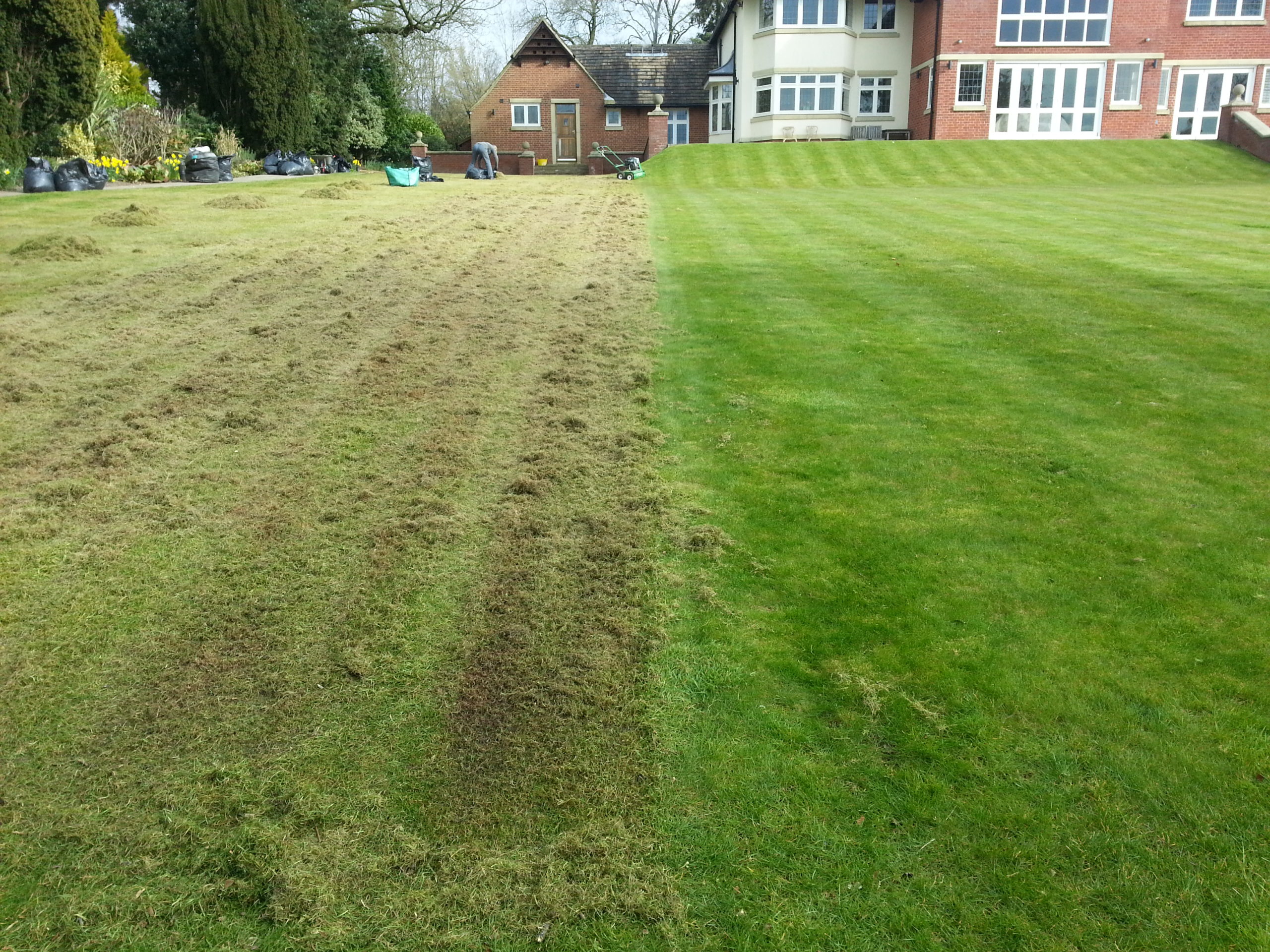Scarification
Cruel to be kind
Scarification is an essential option in any lawn care program. It plays an important part in keeping your lawn in good condition by cutting through and removing, or limiting, the build up of thatch. The accumulation of dead grass leaves, grass clippings, moss, lateral growth, surface rooting and other debris can, over time, build up to form an excessive layer of surface thatch and sub-surface thatch. Too much thatch is detrimental to the quality of your lawn as it prevents the flow of air, water and nutrients through the sward and root-zone.
As a result, the weakened grass is more susceptible to certain lawn diseases and becomes thin and patchy when under stress. During dry spells in particular grasses show signs of stress more quickly and give the appearance of dying off. When the rain does come, your lawn will take longer to recover. Water is prevented from permeating freely through to the root-zone as the thatch layer acts as a water tight roof or lid. Slicing through and removing much of this excessive thatch layer by scarifying, using professional quality machinery with sharpened steel blades, opens up the sward. Scarification acts as a kind of vertical pruning to encourage new, fresh and more resilient growth from the base, or crown, of the grass plants.
How often should I scarify my lawn?
Every lawn is different and many factors will dictate how often your lawn should be scarified. For example, a fine fescue lawn or a lawn with a high percentage of bent grasses is likely to build up thatch quicker than a lawn made up of rye grasses. Therefore, it will need more regular scarification to keep it in good condition. Other factors such as nutrient availability in the soil, and how the lawn is mowed, can make a difference to how quickly thatch builds up. Incorrect watering and fertilisation can also exacerbate the problem by promoting unwanted surface growth and sub-surface matting. As a general rule we would advise scarification at least every other year.
What time of year should I scarify?
The best time of year to carry out scarification is when the grass is still growing, there is moisture and warmth in the soil and air temperatures are sufficient to give good recovery times with fresh new growth. Generally speaking, and living where we do, the autumn months at the back end of the season from mid August to October and spring months from March through to May are the best times. Of course, the weather hasn’t been that predictable in recent years so sometimes those boundaries have to move a little. Often the situation, or type of scarification, (and whether a lawn is to be over-seeded immediately afterwards) on a particular lawn can determine if it’s better for it to be scarified in the autumn or the spring. A lawn surrounded by trees and over-seeded post scarification might best wait until the spring rather than be hampered by constant leaf fall and removal in the autumn, for example.
Mid summer when the ground is dry and mid winter when the grass isn’t growing are the wrong times to scarify your lawn. Some franchised lawn care companies scarify lawns during the incorrect season simply because it’s their quiet time. The Lawn Room will never recommend scarification at the wrong time of the year. If the lawn is too wet, too dry or covered in snow or frost it is the wrong time to scarify.
What type of scarifying machines does The Lawn Room use?
As with all of our services The Lawn Room only uses professional turf care equipment and machines. We have a selection of professional pedestrian scarifiers for small and medium size lawns through to larger lawns.
Scarification – Cruel to be kind
Vertically rotating steel blades cut through and remove the thatch and moss stifling your lawn. This rigorous procedure can churn up a surprising amount of debris allowing your lawn to breathe and become thicker, healthier and greener as a result.
Scarification should generally be carried out in spring or early autumn when the grass is actively growing and the ground is moist; not too wet or too dry. If carried out at other times the lawn will struggle to recover and you run the risk of damaging the lawn and making it vulnerable to stress and disease.

